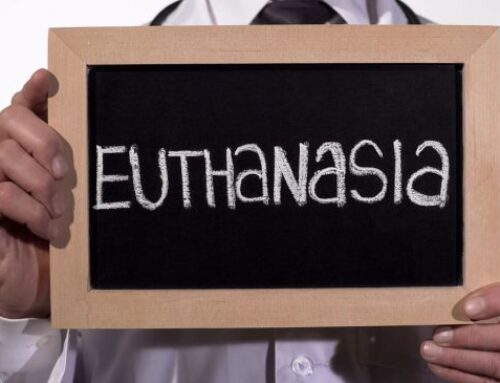As this issue of The Interim went to press, news came in of the Canadian Medical Association’s annual meeting, where a discussion on euthanasia took place and a new survey on doctors’ attitudes to the practice was released. To pro-life eyes, perhaps the most shocking result of the survey was the way in which the media distorted survey findings. Our report of this, unfortunately, must wait until our next issue.
There is no doubt that euthanasia has become the hottest moral issue on the public agenda. We are currently awaiting the decision by the Supreme Court of Canada on the Sue Rodriguez case, and opinion poll after poll seems to show overwhelming public support for legalizing euthanasia.
Whet the opinion polls show – and, to some extent, the views of some physicians – is that most people, even those who should know better, understand very little about the issue.
It is vital that pro-lifers begin to dispel the confusion surrounding euthanasia. We must begin to speak up at every opportunity: in letters to the editor of the daily newspapers; on radio phone-in shows; and so on. The message we have to get across is simple: euthanasia is not showing compassion for the frail and terminally ill; it is killing them. Physician-assisted suicide is not merely a medical convenience for those whose disabilities prevent them taking their own lives; it is allowing doctors to kill their patients.
Withholding or withdrawing treatment is not necessarily euthanasia. If the treatment is no longer of benefit to the patient, or if implementing new treatment will not cure the patient, it is ethically responsible to stop or withhold it. However, it is not ethically acceptable to remove treatment if the motive is to hasten death.
We must make it clear that assisted nutrition and hydration, in cases such as Shirley Dirk’s, is not treatment. (See story in this issue). It is basic, compassionate nursing care. Removal of such care means death by starvation: a painful, drawn-out death. (Stopping nutrition during the last stages of the dying process can be ethical when the body can no longer absorb nutrients, and continuing the care would be causing discomfort to the patient. This part of the dying process, however, does not take 10 days or more.)
The situation should never have arisen where terminally ill people like Sue Rodriguez even consider euthanasia. Severely injured people like Shirley Dirk, and disabled children, should not be starved to death. Calling such abuse “compassionate” of “natural” may appease some consciences, but it will never make it right.




